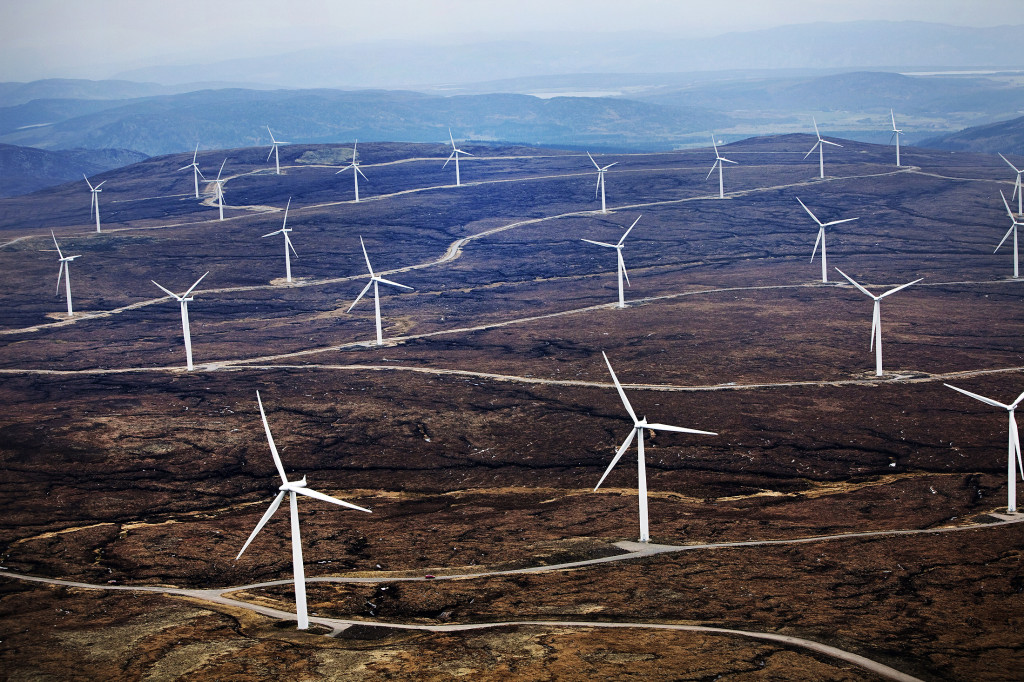Richard Lutz on the need to balance nature with energy policy.
A relative emails me: Add your name to this petition, he asks, to stop wind farms that will form a ring around a pretty village in southern Scotland.
I know the village. It is pretty and I agree that a hemisphere of big wind turbines will give this tidy little community a horrible horizon. Right now, all you can see are ridges of hills forming the foothills of the Southern Uplands. If the plan goes ahead, it will be ridges rotten with skeletal whirring blades..
I don’t know if this village, called Straiton, will get the proposal stopped.
The protesters call for more studies into sea power, offshore wind power, any kind of power, in fact, as long as it isn’t gargantiuan wind turbines (that, to be fair, are to surround their little world of Straiton).
My query is: will this protest succeed because this Ayrshire town is simply so pretty? What about the wind schemes that are near dispirited towns, half-shut mining communities or unattractive crumbling public housing? Is it OK to put these big machines near them?
Is it enough of an excuse not to site a wind turbine near a pretty village because, well, it is a pretty village?
This is a complicated issue. The sides are lining up to either back or condemn how this country harnesses and controls our fuel. In the papers today, for instance, there are acres of columns for or agin the proposed new nuclear plant at Hinkley in Somerset. (see Howard Elston’s idiosyncratic take on this story on this website).
It is easy to simply condemn nuclear power. But as one columnist pointed out, it is cleaner than those coal burning energy plants that ruin the air around us and gobble down fuel that can’t be replaced. And it is more practical than harnessing power from untried green development considering how this country eats up energy sources.
As for the much debated wind fams, including the proposed one around pretty little Straiton, one writer said: ‘…the biggest onshore wind scheme could supply only a fraction of the low carbon power a nuclear plant can produce.’
And, as for the power of the sun, he adds: ‘If every square metre of roof and suitable wall in the UK were covered with solar panels, they would produce 9% of the energy provided by fossil fuels.’
So, where do we go from here? So many folks seem to know so much (or so little) to form any kind of intelligent debate that progresses the arguments.
Many of us… laypeople… are confused.
So many times, it seems, the logic is obscured by simplicities and banalities. Nuclear is dangerous- look at Japan- coal power is ugly and dirty, green is airyfairy and not much use for the real way we live.
But one thing is certain: this small island needs a fuel industry policy and needs it fast. For the future.
We need a combination of fuel sources. Or else we will have a very dirty little island, either filled with coal dust or with nowhere to put the nuclear garbage that the new Hinkley plan and its like will produce.
‘
